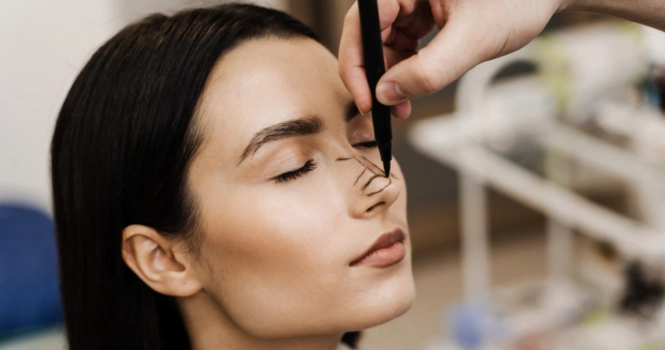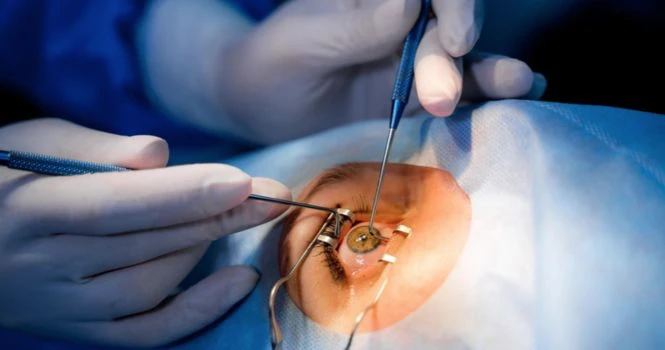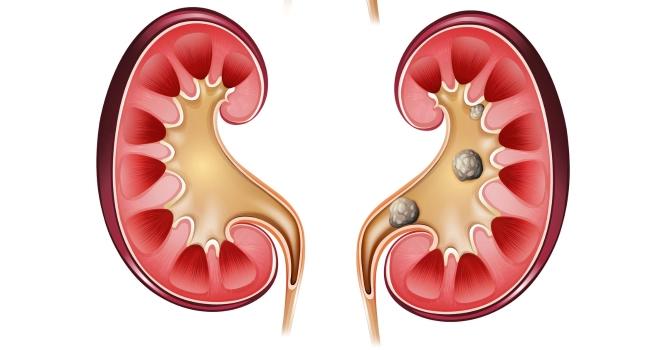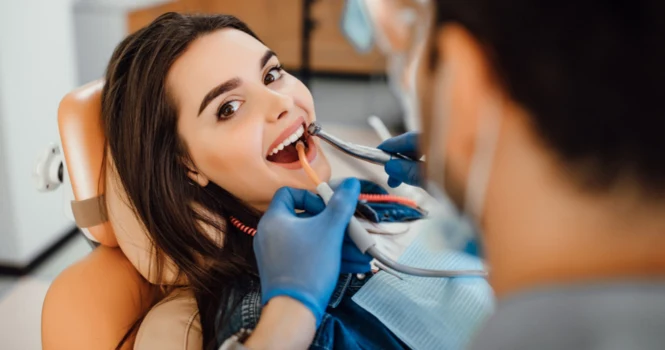In the world of cosmetic surgery, rhinoplasty holds a unique place, offering individuals the opportunity to dramatically change their appearance by reshaping one of the most prominent features—The Nose.
Our article delves into the intricate procedure of rhinoplasty, exploring the surgical techniques involved, the importance of choosing an expert surgeon, and what you can realistically expect in terms of results.
Whether you’re looking to correct a medical issue or simply enhance your facial symmetry, this comprehensive guide provides all the insights you need to make an informed decision about undergoing nose reshaping surgery.
Lets see each procedure in brief,
Surgical Methods for Rhinoplasty
1. Open Rhinoplasty
Surgical methods for rhinoplasty can vary widely, but one of the most commonly employed techniques is Open Rhinoplasty.
This approach involves a small incision on the columella—the fleshy strip that separates the nostrils—to allow the surgeon greater visibility and access to the internal structures of the nose. The skin is then carefully lifted off the underlying cartilage and bone, offering a clear view for more precise sculpting and reshaping.
This technique is often favored for more complex cases or when significant modifications are needed, such as correcting a deviated septum, narrowing the nostril base, or altering the nasal tip.
While open rhinoplasty typically results in a slightly longer recovery time and a small scar on the columella, the benefits often outweigh the drawbacks, particularly when intricate work is required.
It’s crucial to choose a highly skilled and experienced surgeon for this procedure, as the nose is not only a focal point of the face but also a functional organ, making the stakes high for both aesthetic and medical success.
2. Closed Rhinoplasty
Closed Rhinoplasty is another popular surgical approach that differs significantly from Open Rhinoplasty in terms of incision placement and visibility of the internal nasal structures.
In a Closed Rhinoplasty procedure, all incisions are made inside the nostrils, eliminating the need for an external cut on the columella. This results in less visible scarring and often a shorter recovery time. However, because the incisions are internal, the surgeon has more limited visibility and access to the nose’s underlying structures.
Closed Rhinoplasty is often recommended for less complex cases where major reshaping isn’t required, such as subtle hump reduction, tip refinement, or minor straightening of the nose.
While the closed approach may have the benefit of no visible external scars and potentially quicker healing, it demands a high level of skill and expertise from the surgeon due to the reduced visibility and working space. This makes it imperative to choose a surgeon who is experienced in this specific technique if you’re considering closed Rhinoplasty.
It’s crucial to weigh the pros and cons of both Open and Closed Rhinoplasty with your Surgeon to determine which approach is most appropriate for your specific needs, both aesthetically and functionally.
3. Septoplasty
Septoplasty is a surgical procedure specifically designed to correct a deviated septum—the cartilaginous and bony wall that divides the two nasal passages. A deviated septum can cause various issues such as breathing difficulties, recurrent sinus infections, and even snoring.
Unlike cosmetic rhinoplasty, which is primarily focused on improving the appearance of the nose, septoplasty aims to alleviate these medical symptoms by straightening the septum and improving airflow.
During the procedure, the surgeon makes an incision inside the nostril to access the septum, then trims, reshapes, and repositions the deviated cartilage and bone. Depending on the complexity, septoplasty can be performed using either a closed or open approach, though a closed approach is most commonly used.
The surgery is typically done under local or general anesthesia and often takes between 30 to 90 minutes, depending on the severity of the deviation.
Recovery usually involves minimal pain, but patients may experience some swelling and will need to avoid strenuous activity for a few weeks. Septoplasty can be performed alone or in conjunction with cosmetic rhinoplasty, known as a septorhinoplasty, for individuals looking to improve both function and appearance.
It’s essential to consult a skilled surgeon experienced in septal surgeries to assess your specific condition and recommend the most appropriate treatment plan.
4. Tip Plasty
Tip Plasty is a specialized form of rhinoplasty that focuses exclusively on reshaping the tip of the nose. This procedure is ideal for individuals who are generally satisfied with the overall size and shape of their nose but seek to refine or alter the nasal tip for aesthetic or functional reasons.
The goal may be to correct a drooping, bulbous, or upturned tip, or to improve asymmetry. Because of its targeted nature, Tip Plasty often involves shorter surgical time and recovery periods compared to full rhinoplasties.
Depending on the complexity and the desired outcome, the procedure can be carried out using either the open or closed surgical approach.
In an open approach, a small incision is made on the columella for greater visibility and precision, while a closed approach uses internal incisions and is generally employed for less complex cases. The surgeon may employ various techniques to reshape the cartilage, such as trimming, suturing, or even grafting additional cartilage.
Choosing an experienced and skilled surgeon is crucial for a successful Tip Plasty, as the nose tip is a focal point of the face and demands a high level of surgical expertise for optimal aesthetic outcomes.
It’s also important to have a detailed consultation prior to surgery to discuss your expectations and to determine whether Tip Plasty alone will achieve your goals or if other rhinoplasty techniques should be considered.
5. Alar Base Reduction
Alar Base Reduction is a specialized rhinoplasty technique aimed at narrowing the width of the nostril base to achieve a more harmonious facial appearance.
This procedure is particularly popular among individuals who feel that their nostrils are too wide or flared, either naturally or as a result of a previous rhinoplasty.
Alar Base Reduction can have a significant impact on the overall balance and proportion of the face, offering a more refined look without altering the nose’s overall structure.
The procedure involves making small incisions on the inside or outside of the nostril base, often hidden in the natural creases to minimize visible scarring. Excess tissue is then carefully removed, and the remaining skin is sutured together to create a narrower nostril base.
The surgeon must take great care to remove just the right amount of tissue, as overcorrection can result in a pinched or unnatural appearance.
Given that the procedure affects the external appearance of the nose, it’s crucial to choose a highly skilled surgeon familiar with the nuances of ethnic and individual facial anatomy.
Alar Base Reduction can be performed as a standalone procedure but is often combined with other forms of rhinoplasty or facial cosmetic surgery to achieve a comprehensive facial rejuvenation or reshaping.
During your consultation, a thorough evaluation should be made to assess whether Alar Base Reduction is suitable for you and if it should be performed in conjunction with other procedures to meet your aesthetic goals.
6. Dorsal Hump Reduction

Dorsal Hump Reduction is a specific rhinoplasty technique aimed at removing or reducing a prominent hump or bump on the bridge of the nose.
This hump, made up of either bone, cartilage, or a combination of both, can give the nose a hooked or Romanesque appearance, and for many people, it becomes a focal point that detracts from other facial features.
Removing or minimizing this hump can result in a more aesthetically pleasing, smoother nasal profile that harmonizes better with the rest of the face.
The procedure can be carried out through either an open or closed rhinoplasty approach, depending on the complexity of the case and the surgeon’s preference. In both approaches, the skin is lifted away from the underlying bone and cartilage to access the dorsal hump.
The surgeon then carefully shaves down or chisels away the excess material to create a smoother, more refined bridge. After the hump is removed or reduced, the remaining bone and cartilage may need to be repositioned or reshaped to maintain a natural-looking nasal structure.
The skin is then redraped over the reshaped area, and sutures are placed.
As with any surgical procedure, selecting a experienced surgeon is essential for achieving optimal results. It’s also critical to discuss your expectations thoroughly during pre-surgical consultations to ensure that the outcomes align with your aesthetic goals.
A Dorsal Hump Reduction can be a transformative experience, both aesthetically and psychologically, but it requires a surgical touch that is both skilled and artful to achieve a balanced, natural look.
7. Osteotomies
Osteotomies are specialized surgical techniques used in rhinoplasty to modify the bony structure of the nose, often for the purpose of narrowing the nasal bridge or correcting a crooked nose.
These procedures involve making precise, controlled fractures in the nasal bones to allow for repositioning.
Osteotomies are generally performed in the context of more complex rhinoplasty procedures and are often accompanied by other techniques like dorsal hump reduction to achieve a balanced, harmonious facial profile.
In an osteotomy, after the overlying skin has been lifted off the nasal bones through either an open or closed approach, the surgeon uses specialized instruments to make careful cuts or “fractures” in the bones.
These are strategically made to allow the bones to be mobilized and repositioned. Once the bones are properly aligned, they are secured in place, often without the need for any fixation devices, as they naturally adhere during the healing process.
Osteotomies require a high level of expertise and surgical skill, given that they involve altering the fundamental structure of the nose. Even a small mistake can lead to complications such as asymmetry, breathing difficulties, or an unsatisfactory aesthetic result.
For these reasons, it’s crucial to select a surgeon with substantial experience and demonstrated proficiency in osteotomies and complex rhinoplasty procedures.
The recovery from an osteotomy can be slightly longer than less invasive rhinoplasty techniques, often involving more bruising and swelling. However, the results can be transformative, offering long-lasting structural and aesthetic improvements to the nose and face.
As with any surgical procedure, thorough preoperative consultations are vital for setting realistic expectations and for understanding the risks and benefits of the procedure.
Non-Surgical Methods
1. Filler Rhinoplasty (Non-Surgical Nose Job)
Filler Rhinoplasty, also known as a non-surgical nose job, offers a minimally invasive alternative to traditional surgical rhinoplasty.
This procedure utilizes injectable dermal fillers like hyaluronic acid to temporarily reshape the nose. While it can’t reduce the size of the nose or correct structural issues like a deviated septum, filler rhinoplasty is effective for addressing minor aesthetic concerns.
These can include smoothing out a dorsal hump, lifting the tip of the nose, or adding symmetry to a slightly crooked nose.
The procedure is generally quick, often completed in less than an hour, and involves minimal downtime. A topical anesthetic may be applied for comfort, and then the filler is precisely injected into specific areas to achieve the desired shape.
Results are immediately visible but are temporary, typically lasting anywhere from six months to two years, depending on the type of filler used and individual factors like metabolism and lifestyle.
While filler rhinoplasty offers a convenient and less invasive option for nose reshaping, there are limitations to what it can achieve.
It’s also crucial to have the procedure performed by a qualified and experienced practitioner, as injecting filler into the nose carries specific risks, such as accidental injection into blood vessels that could lead to skin necrosis or other complications.
As with any medical procedure, a thorough consultation should be undertaken to discuss your aesthetic goals, suitability for the procedure, and any potential risks or side effects. If your concerns are beyond what filler rhinoplasty can address, a surgical option may be more appropriate for long-lasting and significant changes.
2. Botox for Nasal Flaring
Botox for nasal flaring is a lesser-known but increasingly popular minimally invasive treatment option for those looking to reduce the width of their nostrils without undergoing surgery.
Botox (Botulinum toxin) is a neurotoxin that temporarily paralyzes or weakens the targeted muscles. When used for nasal flaring, small amounts of Botox are injected into the alar base—the muscle area responsible for the widening of the nostrils.
By relaxing these muscles, Botox can reduce the extent to which the nostrils widen when you smile or breathe deeply, leading to a more refined and narrower appearance of the nose.
This procedure is typically quick, usually taking less than 30 minutes, and involves minimal to no downtime.
The effects are temporary, generally lasting between three to six months, depending on individual factors like metabolism rate and muscle activity. One of the major benefits of using Botox for nasal flaring is that it’s a non-permanent solution, allowing you to “test-drive” the result before committing to more permanent surgical options like Alar Base Reduction.
However, again it’s important to consult a skilled and experienced medical professional for this procedure, as incorrect placement of the injection could result in undesired effects.
Although Botox has a good safety profile, there are risks associated with its use, such as possible spreading of the toxin to adjacent muscles, which can cause issues like drooping.
A thorough consultation should be conducted to assess your suitability for this treatment, discuss your aesthetic goals, and understand any potential side effects or complications.
Botox for nasal flaring is best suited for those with mild to moderate issues and may not be effective for more severe cases, for which surgical intervention may be recommended.
3. Thread Lift for Nose
A thread lift for the nose, also known as a non-surgical nose lift or “lunchtime nose job,” is a minimally invasive procedure designed to subtly lift and reshape the nose without the need for surgical intervention.
In this technique, dissolvable threads—usually made from a material like polydioxanone (PDO)—are inserted through tiny punctures in the skin and then anchored in place to provide lift and support.
As the threads dissolve over time, they stimulate collagen production, which can offer longer-lasting results than fillers.
The thread lift procedure is typically quick, often completed in under an hour, and offers the advantage of immediate results with minimal recovery time. It’s ideal for those seeking minor adjustments like lifting the nasal tip or smoothing out minor bumps, rather than major structural changes to the nose.
However, the effects are temporary, generally lasting between 6 to 12 months, depending on the type of threads used and individual factors like lifestyle and metabolism rate.
While the thread lift for the nose is less invasive than surgical rhinoplasty, it still carries potential risks and complications, such as infection, thread migration, or asymmetry.
Therefore, it’s crucial to have the procedure performed by a qualified and experienced medical professional proficient in the technique.
Prior to undergoing a thread lift, a thorough consultation should be undertaken to assess your suitability for the treatment, clarify your aesthetic goals, and discuss any potential side effects or complications.
For those with more significant concerns about their nasal structure, or those seeking permanent results, surgical rhinoplasty may be a more appropriate option.
Revision Procedures
1. Revision Rhinoplasty
Revision Rhinoplasty, also known as secondary rhinoplasty, is a specialized surgical procedure aimed at correcting issues that arise from a previous nose surgery. These issues can be either functional, such as breathing difficulties, or aesthetic, like undesirable scarring or asymmetry.
Revision rhinoplasty is often considered more complex than primary rhinoplasty due to the altered anatomical structures and the presence of scar tissue from the previous surgery. As a result, it demands a high level of skill, experience, and surgical finesse.
The procedure can be performed using either an open or closed approach, depending on the complexities involved and the specific issues being addressed. Techniques can vary widely from simple adjustments to more extensive reconstructions that may require grafts sourced from other parts of the body, like the ear or rib, to rebuild structural elements of the nose.
Because revision rhinoplasty is typically more complex, it often involves a longer recovery period, and the risks of complications can be higher. Therefore, selecting a surgeon with substantial experience in revision cases is crucial for achieving the best outcome.
Before undergoing the surgery, a comprehensive consultation should be held to discuss the patient’s medical history, previous surgeries, and desired goals. Imaging tests may also be used to plan the surgical strategy meticulously.
Given the complex nature of revision rhinoplasty, setting realistic expectations is crucial. While the procedure aims to address and correct the issues stemming from the initial surgery, there are anatomical and physiological limits to what can be achieved.
A thorough understanding of these limitations, as well as the risks and potential complications, is essential for anyone considering this procedure.
2. Septal Perforation Repair
Septal perforation repair is a specialized surgical procedure aimed at treating a hole in the nasal septum, the cartilaginous and bony structure that separates the two nostrils.
Septal perforations can result from a variety of causes including previous nasal surgeries, trauma, chronic inflammation, or substance abuse (like cocaine use).
These perforations can lead to a range of symptoms including nasal obstruction, recurrent infections, bleeding, and a whistling noise during breathing.
The complexity of repairing a septal perforation depends on various factors such as the size and location of the hole, the patient’s overall health, and any previous surgeries. The main goals of the procedure are to close the perforation and restore normal nasal function, while minimizing the risk of recurrence.
Various surgical techniques may be used in septal perforation repair, often involving the use of grafts or flaps to close the hole. Tissue may be harvested from other parts of the body, such as the ear or rib, or synthetic materials may be used.
The surgery typically requires a highly customized approach and may be performed using either an open or closed method, depending on the specific needs of the case.
Given the intricacies involved, septal perforation repair requires a surgeon with specialized training and significant experience in nasal surgeries. Pre-operative imaging and thorough diagnostic evaluation are crucial for planning the surgical strategy.
Post-operative care often involves close monitoring to assess the success of the repair and manage any potential complications, such as infection or graft failure.
Prior to surgery, a detailed consultation is essential to discuss the patient’s medical history, symptoms, and expectations, as well as to understand the risks and potential complications associated with the procedure.
Septal perforation repair can significantly improve the quality of life for individuals suffering from this condition, but it is important to set realistic expectations and be prepared for a potentially long recovery period.













